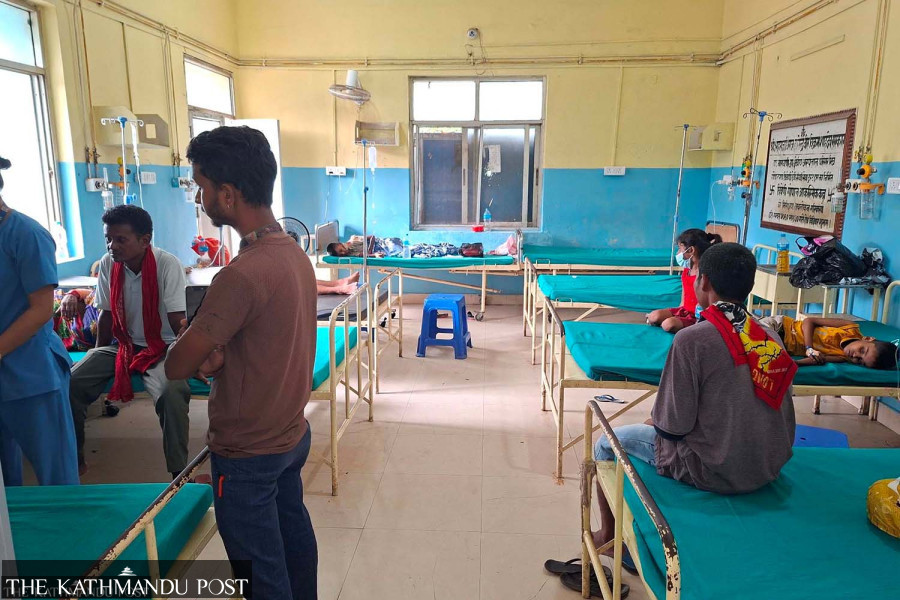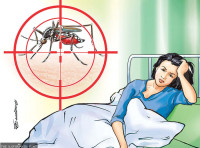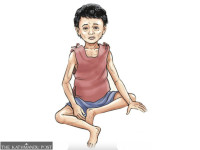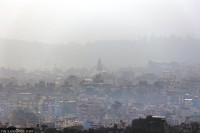Health
Birgunj’s cholera spreads to neighbouring areas and Bara
Epidemiology and Disease Control Division has consulted WHO representatives on the need for ring vaccination in affected areas.
Post Report
At least 13 people from Pokharia Municipality in Parsa district have tested positive for cholera, which has been spreading across various wards of the nearby Birgunj Metropolitan City and other surrounding local units.
Some diarrheal patients at the provincial hospital in Kalaiya, in the neighbouring Bara district, have also tested positive for cholera.
“Though the pace of the spread of cholera has slowed, people are still getting infected with this potentially deadly disease,” said Dr Prakash Budhathoki, spokesperson at the Ministry of Health and Population. “Relevant agencies under all three tiers of government—federal, provincial and local—are working round the clock to contain the outbreak.”
Cholera is a highly infectious disease that causes severe diarrhoea and vomiting, which can lead to dehydration and death within a few hours if left untreated. Three people have died and over 600 have been infected, as of Thursday evening. Over three dozen are receiving intensive care at various hospitals, and nearly 300 are hospitalised.
The National Public Health Laboratory has confirmed that Vibrio cholerae o1 Ogawa serotype is responsible for the outbreak.
Health workers serving in the affected areas said that the disease has spread to adjoining local units and the neighbouring Bara district.
“Containing the spread of cholera in communities is the biggest challenge for us,” said Dhani Singh, public health official at the Public Health Office, Parsa. “We have been taking all necessary control measures, but ensuring safe drinking water to the public and preventing disease transmission from infected patients remains difficult.”
Public health experts say the ongoing Birgunj outbreak is the largest since the Jajarkot incident in 2009. Sixteen years ago, the far-western district of Jajarkot saw a major cholera outbreak that killed several and infected hundreds.
Experts say that the outbreak of cholera exposes critical gaps in the government’s preparedness and response system, and water and sanitation conditions.
Experts are particularly alarmed by both the severity of the outbreak and the deaths it has caused.
Nepal often witnesses outbreaks of water- and food-borne diseases, including cholera, during the monsoon season as floodwaters contaminate most of the drinking water sources.
Last year, at least 95 cholera cases were confirmed in Kathmandu, Lalitpur, Jajarkot, Pyuthan, Makawanpur, Rolpa, Sindhupalchok, Achham, and Rautahat districts.
Last year also, the outbreak was caused by Vibrio cholerae 01 Ogawa serotype, which was found in stool samples of those infected.
Experts say poor sanitation and hygiene make the country remains highly vulnerable to waterborne diseases, including diarrhoea, dysentery, typhoid, hepatitis, and cholera, especially in the monsoon season.
They say the risk of waterborne diseases will not decrease until the country’s water and sanitation conditions improve, and people get safe drinking water. Several other factors, including storage conditions, supply pipes, and pollution of water sources, also impact the quality of water supplied to households.
“Awareness drive and health education plays a vital role in containing the outbreak, and the general public must be informed about what is happening in their surroundings and precautionary measures,” said Dr Baburam Marasini, former director at the Epidemiology and Disease Control Division. “Authorities must invest in improving water and sanitation conditions.”
The World Health Organisation says cholera is a global threat to public health, and a multifaceted approach is key to controlling the disease and reducing deaths.
Meanwhile, the Epidemiology and Disease Control Division said that all necessary preventive measures have been taken to control the spread of cholera to other parts of the country.
“We have very good coordination with provincial and local health authorities,” said Dr Chandra Bhal Jha, director of the division. “Our expert team is still in the disease-hit area and guiding provincial and local health authorities. Another team comprising senior officials from the WHO will reach there tomorrow [Friday].”
Officials from the division have also discussed the need for cholera vaccination with the World Health Organisation’s Nepal representatives.
“The WHO team will assess the situation and take further decisions regarding vaccination,” said Jha. “If the spread of the disease in the community continues, we will have to administer the vaccine to the at-risk population.”
The Health Ministry administered cholera vaccines to people from affected areas of Kapilvastu, Rautahat, and Kathmandu a few years ago to contain the further spread of the disease.




 13.12°C Kathmandu
13.12°C Kathmandu













